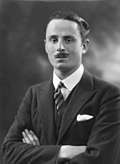 Grave of Kathleen Johnson of Carshalton, Père-Lachaise Cemetery | |
| Total population | |
|---|---|
| 261,000 [1] [2] - 400,000 [3] [4] [5] [6] [7] | |
| Regions with significant populations | |
| Aquitaine, Languedoc-Roussillon, Midi-Pyrénées, Brittany, Poitou-Charentes, Corsica, Centre-Val de Loire, Limousin, Pays de la Loire, Lower Normandy, Provence-Alpes-Côte d'Azur, Alsace (particularly Strasbourg), French Alps | |
| Languages | |
| French, English | |
| Religion | |
| Anglicanism, Protestantism, Irreligion, Catholicism | |
| Related ethnic groups | |
| Britons |
British migration to France has resulted in France being home to one of the largest British-born populations outside the United Kingdom. Migration from the UK to France has increased rapidly from the 1990s onwards. Estimates of the number of British citizens living in France vary from 261,000 [1] [8] to 400,000. [3] [9] [10] [11] [6] Besides Paris, many British expatriates tend to be concentrated in the regions of southern France, Brittany, and recently the island of Corsica. Dordogne has a large British immigrant community. The region has between 5,000 and 10,000 British residents and 800 British entrepreneurs, drawn by the French lifestyle and warmer climate in the south. [12] [13] [ failed verification ]






























